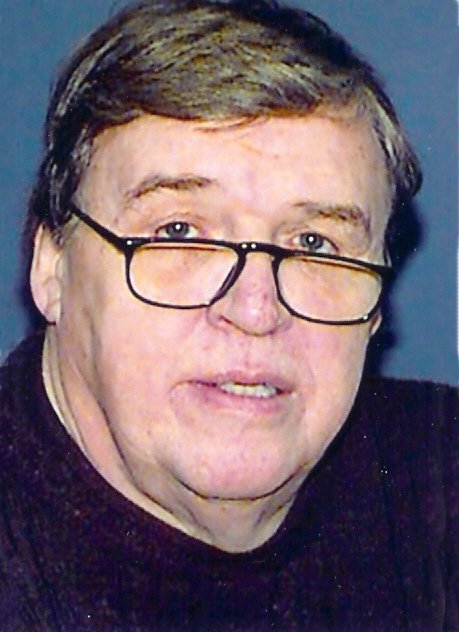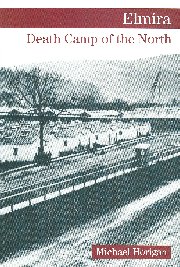Elmira: Death Camp of the North is the first book by high school American History teacher Michael Horigan. In a straightforward manner, he chronicles the political and personal reasons for Elmira having “the highest death rate of any prison camp in the North.”
For the most part, Horigan places the blame squarely on the shoulders of Union Secretary of War Edwin Stanton, who, according to the author, oversaw an unstated policy of retaliation for Confederate treatment of Union prisoners of war.
While acknowledging that Andersonville had a higher percentage of fatalities, Horigan states that a breakdown of Confederate transportation infrastructure and the destruction of the South’s ability to produce foodstuffs partially explain the high death toll at the Georgia prison. Because Elmira was located in New York far from the scene of fighting and in an area noted early in the war for its excellent transportation network and abundance of food, Horigan finds no similar excuses for what happened in what was officially known as Barracks No. 3 at Camp Chemung.
Horigan supports his hypothesis of a deliberate policy of retaliation with a large amount of circumstantial evidence. “The verifiable facts constitute an enormous haystack,” the author writes, “containing an abundance of tiny needles that reveal damning information.”
One such piece was Secretary Stanton’s call in the spring of 1864 that “precisely the same rations and treatment be from henceforth practiced to the whole number of rebel officers remaining in our hands that are practiced against either soldiers or officers in our service held by the rebels.”
To institute that policy, Stanton selected Col. Benjamin Tracy to replace Lt. Col. Seth Eastman as camp com-mandant in early 1864. Henry Raymond, one of the founders of The New York Times and a supporter of retaliation, championed the choice of Col. Tracy. Through Special Orders No. 336, Tracy effectively curtailed the beef ration at the prison. Tracy also blocked improvements to the prison hospital.
Nonetheless, Horigan notes, Tracy also made efforts to correct the unsanitary condition of a pond within the camp, pushed for construction of additional barracks when it became clear that — due to overcrowding — many prisoners would have to sleep in tents during the winter, and tried to get additional clothing for the Confederates in the camp, many of whom had nothing but thin summer uniforms.
The attempt to get extra clothing to the prisoners at Elmira provides one of the many interesting stories associated with the camp that Horigan researched. In the summer of 1864, the brother of Confederate Gen. John H. Winder proposed that cotton be shipped from Mobile to New York City in exchange for clothing to be sent to Confederate prisoners. Unfortunately, the cotton did not arrive in New York until the end of January 1865, a month during which 285 prisoners died in Barracks No. 3.
The author also found a connection between the prison camp and the assassination of President Lincoln. In April 1865, a man calling himself John Harrison gained access to Camp Chemung to make sketches. His real task was to determine if the 5,000 Confederates remaining in the camp after prisoner exchanges were again instituted in February 1865 could be freed by means of a mass escape. When news of Lincoln’s death reached Elmira, the man fled to Europe.
“John Harrison” turned out to be John Harrison Surratt, the son of Mary Surratt, executed for her part in the assassination plot. John Surratt was returned to the United States in 1867 and was indicted as a conspirator. His defense was that he was in Elmira at the time, “a claim confirmed by the Elmira clothing clerk who had sold Surratt a suit of clothes on April 13.”
Perhaps the most stunning story chronicled by Horigan concerns some men from the 97th New York. They were caught posing as Confederate prisoners — one can presume — in order to avoid having to fight. The four ended up at Elmira and were once again sent to the front. Either they were sorely misinformed about the conditions at Northern prisons, or they figured their chances were still better in Helmira, as the camp came to be called, than in the line of Confederate fire.
One Union soldier did live in the camp as a prisoner, however. A young man from Owasco, N.Y., served as a spy for the camp authorities. He and a group of Confederate informants helped make Elmira the most secure prisoner-of-war camp in the North, with only 17 escapes during the year of the camp’s existence.
Although a map of the Elmira area during the Civil War could have provided some clarity to the discussion about why the town was chosen as a Union depot and later as a prison site, in general Horigan’s prose is clear and his arguments compelling.
Elmira should serve as a model, along with Benton McAdams’s Rebels at Rock Island, of the kind of study remaining to be done about several other prison camps, both North and South.
by Dave Page
Dave Page teaches college journalism and most recently contributed several articles to ABC-CLIO'sEncyclopedia of the American Civil War: A Political, Social, and Military History.
 |
|
|
Michael Horigan has taught and lectured in american History for more than twenty years at Horseheads High School in Elmira, New York. Recognized locally as an expert on the Civil War prison camp, in 1984 he was invited to serve on the advisory committee that constructed a memorial to the camp that was commemorated in 1085, His views were also included in a 1993 Public Television documentary on the subject entitled Helmira: 1864-1865. This is his first book.
|
|

